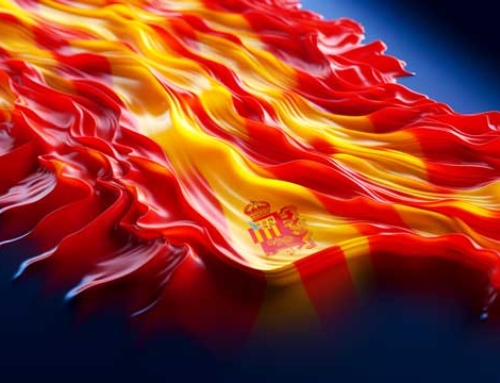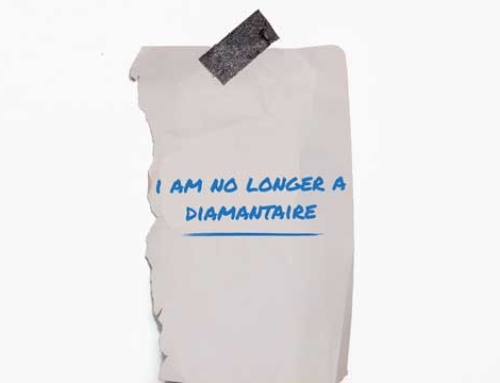Image: Kathleen Van Brempt – from her Twitter feed
It is incomprehensible that trade in diamonds from Russia is not part of the European sanctions, Kathleen Van Brempt (Member of the European Parliament for Vooruit) believes.
‘L’honneur est le diamant que la vertu porte au doigt,‘ Voltaire wrote: honor is the diamond that virtue wears on her finger. But when it comes to Russian diamonds, one finds little honor or virtue today. Even the eighth European sanctions package doesn’t affect the Russian diamond sector. Incomprehensible. Not only are we leaving open an important flow of money to the Russian war apparatus, we are also putting the ethical credibility of our own diamond sector at risk.
Putin largely finances his war today by the export of raw materials and natural resources, such as energy, by Russian oligarchs and state-owned companies. In this, Russian diamonds play an important role. Russia earns some $4 four billion annually from the export of rough diamonds. Alrosa, a government-controlled group of diamond companies with strong ties to the Kremlin, controls the vast majority of that diamond mining.
Alrosa is not only involved in diamonds. In 2008, the company received a license from the Russian Bureau of Technical Supervision to mine, process and store uranium. A year later, in 2009, Alrosa entered into a consortium with Rosatom, the Russian nuclear agency and the biggest player in the Russian nuclear industry. For Europe to finance the renewal and strengthening of Russia’s nuclear arsenal through this bypass is not only ethically unacceptable. It is, especially now that Putin is openly threatening to use tactical nuclear weapons in the war against Ukraine, also particularly stupid.
Lame excuses, says Kathleen Van Brempt
By refusing to impose an import ban on Russian diamonds, the European Union is the exception among its allies today. The United States, Canada and New Zealand already imposed sanctions on Alrosa.
However, European measures were being considered. A draft of the list of targeted entities, dated Sept. 28, still listed Alrosa. But after heavy lobbying, Alrosa disappeared from the final list, which was approved last week. The argument cited is that it is best to have consistency between the sanctions list for individuals, companies and organizations with strong ties to Putin and the Kremlin, on the one hand, and the list of sectoral sanctions, on the other. Diamond was never part of the latter. A lame excuse. Instead of removing Alrosa from the sanctions list, it would have made more sense to include diamonds on the list for sectoral sanctions.
The diamond industry likes to point out the risk of major job losses. This would involve 10,000 positions, directly and indirectly. But is that really true? Figures from the FOD Economie (Belgian Ministry of Economy) show that the trade in Russian diamonds in Antwerp has already dropped by 80 percent to date, with little or no impact on the sector. Why then that last 20 percent is an obstacle remains unclear.
According to the Antwerp World Diamond Centre (AWDC), Belgium exported $18.528 billion worth of polished and rough diamonds last year. Only 10 percent of that was Russian diamonds. That sanctions would lead to a loss of one in three of all jobs in the diamond sector in our country seems greatly exaggerated.
Moreover, says the industry, it will not reduce trade in Russian diamonds. Russia could easily tap new markets in countries like India or Saudi Arabia. And the lack of traceability makes it impossible to keep Russian diamonds, once polished elsewhere, off our market. But that too is questionable. In India, for example, an increasing part of the diamond industry – both cutters and polishers – is openly distancing itself from Russian diamonds and investing in improving their traceability.
That process, by the way, has been underway for some time. To prevent the trade in blood diamonds and increase diamond traceability, the Kimberly Process was established in the early 2000s. That is a certification scheme whereby rough stones are exported in numbered and sealed containers with accompanying documents of origin. Several major players such as De Beers are already using such a system. So when it comes to keeping Russian diamonds off our market, it is not a matter of being able to, but of wanting to.
Kathleen van Brempt feels Antwerp pride
As an Antwerp native, I am incredibly proud of the diamond’s role and place in our city’s history. And I sincerely hope that it will remain so in the future. But then the industry must also dare to change. Antwerp likes to market itself as an ethical diamond center. In the Kimberley Process, the sector itself was one of the pioneers in tackling the trade in blood diamonds.
Today Antwerp could take up that pioneering role again. But then it must also acknowledge that Russian diamonds are blood diamonds and do not belong on our market. Stop resisting the sanctions on Russian diamonds and prove that Antwerp’s diamond industry can continue to make our city shine for the next 500 years.






